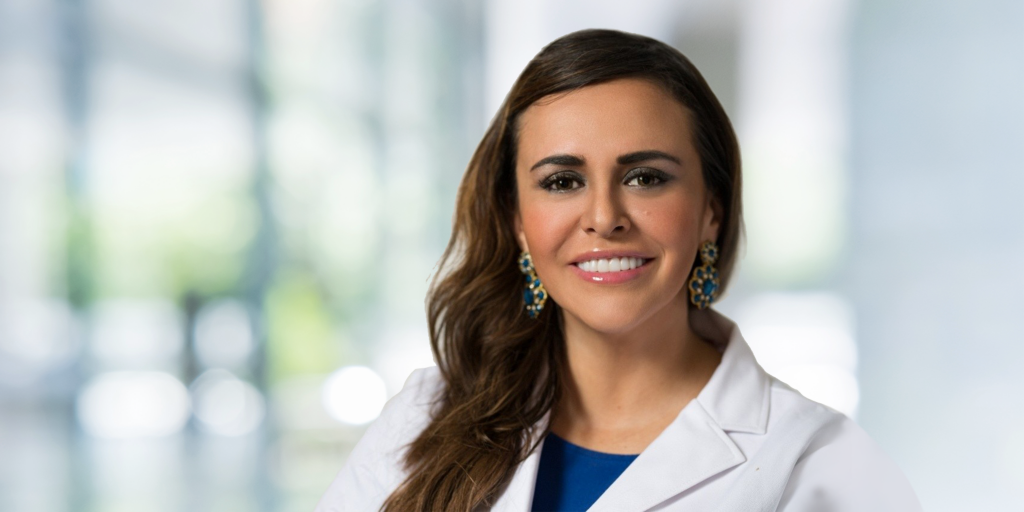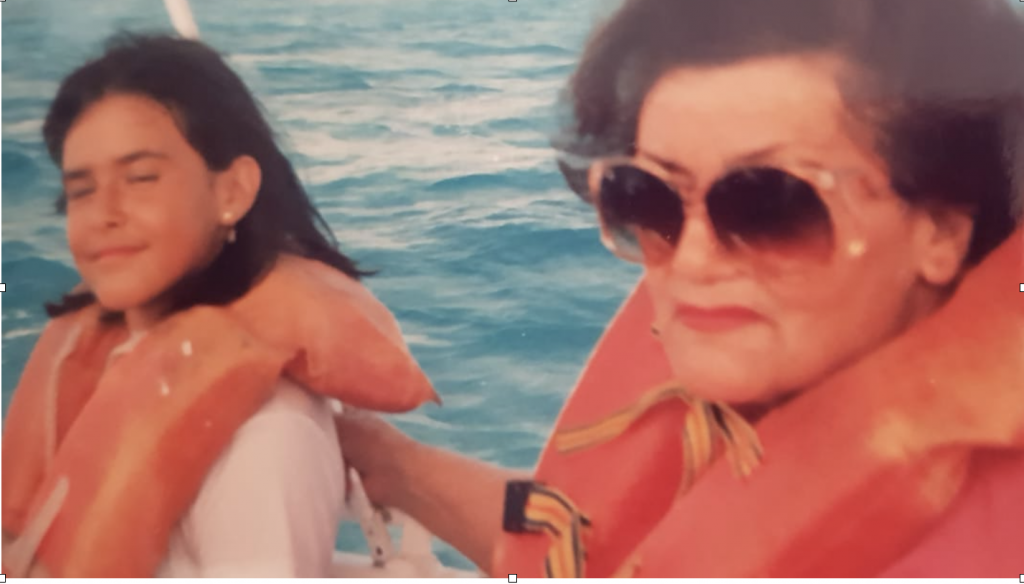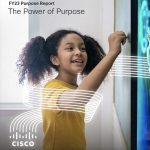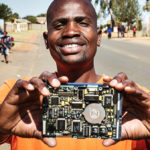 Now that the Cisco Global Problem Solver Challenge 2020 winners have been officially announced, you’ll want to learn more about each winning team and the story behind each innovation. In its fourth year, this online competition awards cash prizes to early-stage startups to develop a solution that drives economic development or solves a social or environmental problem.
Now that the Cisco Global Problem Solver Challenge 2020 winners have been officially announced, you’ll want to learn more about each winning team and the story behind each innovation. In its fourth year, this online competition awards cash prizes to early-stage startups to develop a solution that drives economic development or solves a social or environmental problem.
We are excited for you to learn more about the 2020 winning teams addressing some of the biggest challenges we face through technology-based solutions. I recently interviewed Respira Labs founder, Maria Artunduaga, M.D., M.P.H., M.T.M., winner of a Second Runner-Up $25,000 USD prize.
What problem is your technology solution trying to solve?

Maria: Chronic Obstructive Pulmonary Disease (COPD) affects one in ten people before they reach 65 years of age, and 30 million people overall in the United States alone. It’s also very expensive to treat. The U.S. spends $50 billion a year on COPD, and about $100 billion treating chronic lung conditions like asthma and pulmonary fibrosis. Now, the emergence of COVID-19 has hiked spending significantly, experts estimate by 25 percent.
The problem we are trying to solve is the lack of accurate home-based monitoring technology. Right now, doctors don’t have the tools to figure out whether somebody is deteriorating. Patients rely on an error-prone monitoring device called a pulse oximeter, or respiratory rate sensors than are not good if you don’t stay still. A healthcare provider, namely doctors, nurses, or respiratory therapists, want to be proactive, intervene quickly, and prevent hospitalizations. The advantage of our technology is that we can provide information on dynamic changes of lung air volumes in real time.
What inspired you to develop this solution?

Maria: I confronted lung disease for the first time when I saw my grandmother gasping for air. Her attack wasn’t detected because she didn’t recognize the symptoms of COPD. She was a very independent woman living alone, and she didn’t want to bother anyone. Even though my parents, my sister, and I are doctors, we struggled to figure out how she was feeling – and she wasn’t good at communicating. She had a pulse oximeter that gave her an “okay number,” but when we took her to the emergency room, she was admitted to the ICU and died from complications of a COPD-related respiratory crisis.
That is when I decided to switch gears, from surgery to global health, and work on developing better technologies for public good. The device that I developed, Sylvee, is named after my grandmother.
Can you explain how the solution works?
Maria: Sylvee uses off-the-shelf components, tiny speakers, and microphones to capture acoustic resonance through digital signal processing.
The scientific basis of this device lies in the inhaled air that becomes trapped when patients on the verge of deterioration tries to exhale.
Sylvee’s powerful software algorithms help us translate sound frequency changes into resonance data. This information tells us that a patient is trapping more air, catalyzing the device to send an alert.
The concept is very similar to glucometers in diabetes; we’re developing a new biomarker for early detection of COPD crisis.
Additionally, the sensor can also detect sounds inside of the thoracic cavity. So, if you cough or have wheezing, we can determine the cause. What is particularly groundbreaking is that our cost of goods are low, most of the magic relies on the software and machine learning.
We are now working on the second generation, a wireless device with sensors that can capture other signals from the body, like temperature or movement.
How will winning a prize in the Cisco Global Problem Solver Challenge help you advance your business?
Maria: Respira Labs is at an early stage, and more importantly, we are trying to develop a regulated product, a medical device. Gaining Food and Drug Administration (FDA) clearance takes two to three years of research and development; you need to make sure everything is safe and effective before using the device on patients.
Do you know what you will use the prize money for specifically?
Maria: With $25,000, we will spend the money in accelerating our product development, more specifically in validating our sensor against clinical-grade tests. We think the award will help us get to market six months earlier, probably by early 2022.
How has the global pandemic impacted your work?
Maria: COVID forced us to be completely remote, since I mostly work with consultants that facilitated the process. The pandemic has also made health-care providers more cognizant of the advantages of remote monitoring, so many have contacted us to see if we will use our device to address COVID-related lung problems. We are considering a partnership with Texas Medical Center to run a proof-of-concept trial based on historical data from SARS. Pulmonologists believe that 40 percent of COVID patients will develop a chronic lung condition, known as pulmonary fibrosis. The sooner symptoms are detected and treated in this condition, the better. Air-trapping is a major indicator of pulmonary fibrosis, so our device will be ideal. In effect, the pandemic has revealed our potential as a diagnostic tool for pulmonary fibrosis and our applicability to prevent long-term lung sequelae in COVID patients.
Why did you decide to start your own social enterprise versus going to work for a company?
Maria: The initial impetus was my grandma’s death. But in hindsight, being a woman of color also played into my decision. Throughout my academic career in the U.S., I’ve repeatedly experienced discrimination. Also, people were telling me that I was too ambitious, that I shouldn’t be speaking out, that I should know my place and keep my head down. I always knew this shouldn’t stop me from following my dreams.
Over the years, I have learned that many women and people of color have had similar experiences and that’s why they decided to help others startup their companies. I decided to become an entrepreneur because I was confident that I could fulfill my potential. As a doctor, I want to affect millions of people’s lives – and I firmly believe this is a way to help me do it.
What is the best piece of advice you received about starting your social enterprise?
Maria: The best advice was for me to believe in myself, keep trying, and stay resilient. Anyone launching an enterprise is going to get a lot of “no’s” and make a lot of mistakes. But it’s okay for entrepreneurs to fail, learn from those mistakes, and try again. That approach was very different from my training in medicine. In medicine, you can’t make mistakes since people’s lives are at risk. As an entrepreneur, it is great to know that people don’t expect you to be perfect, but that you must work hard to make something happen. The entrepreneurs that I talk to, like my mentors, are incredibly supportive and that positivity is very comforting.
Do you have any advice for next year’s applicants?
Maria: I spent a lot of time reviewing the application and making an excellent business case. You need to think like a CEO, because you’re asking for an investment. And you need to prove that you are going to be sustainable and that you’re going to change lives.
What job would you be doing if you didn’t do this?
I would probably be an investor. Next on my to-do list is to raise funds to help out under-represented founders. I live in Silicon Valley, and I haven’t met a single Latin American woman leading a deep technology company. Yet there is so much talent. I truly believe the best founders are passionate, hungry, driven, and ambitious – and don’t take “no” for an answer.
What is your favorite book and why?
Maria: I like Mountains Beyond Mountains: The Quest of Dr. Paul Farmer, A Man Who Would Cure the World, by Tracy Kidder. It is about physician and medical anthropologist Paul Farmer and his work fighting tuberculosis in countries such as Haiti. His philanthropy inspires me.
What is your favorite activity when you are not working?
Maria: I’m very artistic. And one of the reasons I initially wanted to go into plastic surgery was because I’m very good at art. I also dance flamenco and enjoy singing boleros, and tangos, and Latin American Folk music. I like drawing, painting. I do a little bit of sculpting. And I enjoy visiting museums, world traveling, and watching documentaries. I like people, so if you ask me my real passion, it would be social sciences. I keep telling my husband that before I die, I’ll become an anthropologist.
Stay tuned for more articles in our Cisco Global Problem Solver 2020 blog series,
featuring interviews with every winning team!




Wow, I’m inspired.
I tried to download (packet tracer) for practice and I finished from setup on my desk top, therefore requested my email and password, but does not accept my password even when I change it. Please let me know what I can do?
Sister habari.